Do you know your way to propagate Rosemary indoors? The secret lies in 3 things; water, soil, and restorative propagative parts!
Stick with the article and learn the best ways to propagate Rosemary at home with additional care tips.
Table of Contents Show
Reasons to Grow Rosemary Herb
Rosemary, a perennial herbaceous shrub, lasts more than a decade when provided with proper care.
Easy propagation allows you to populate your indoor or outdoor herb garden with fragrant Rosemary.
But here are some more reasons to propagate Rosemary plants.
- The propagation approach is cost-efficient as it is expensive to buy every year.
- Rosemary propagated from stem cutting grows much faster within a year or two.
- Rosemary is a beneficial herb rich in antioxidants, vitamins, iron, and minerals, adding flavor to food.
- The vegetative propagation method gives a new plant identical to the parent plant.
- Propagation is one of the options to salvage the overfertilized, pest-infected, diseased Rosemary.
When to Propagate Rosemary?
The ideal propagation time to grow the Rosemary herb varies depending on the climate and the hardiness zone.
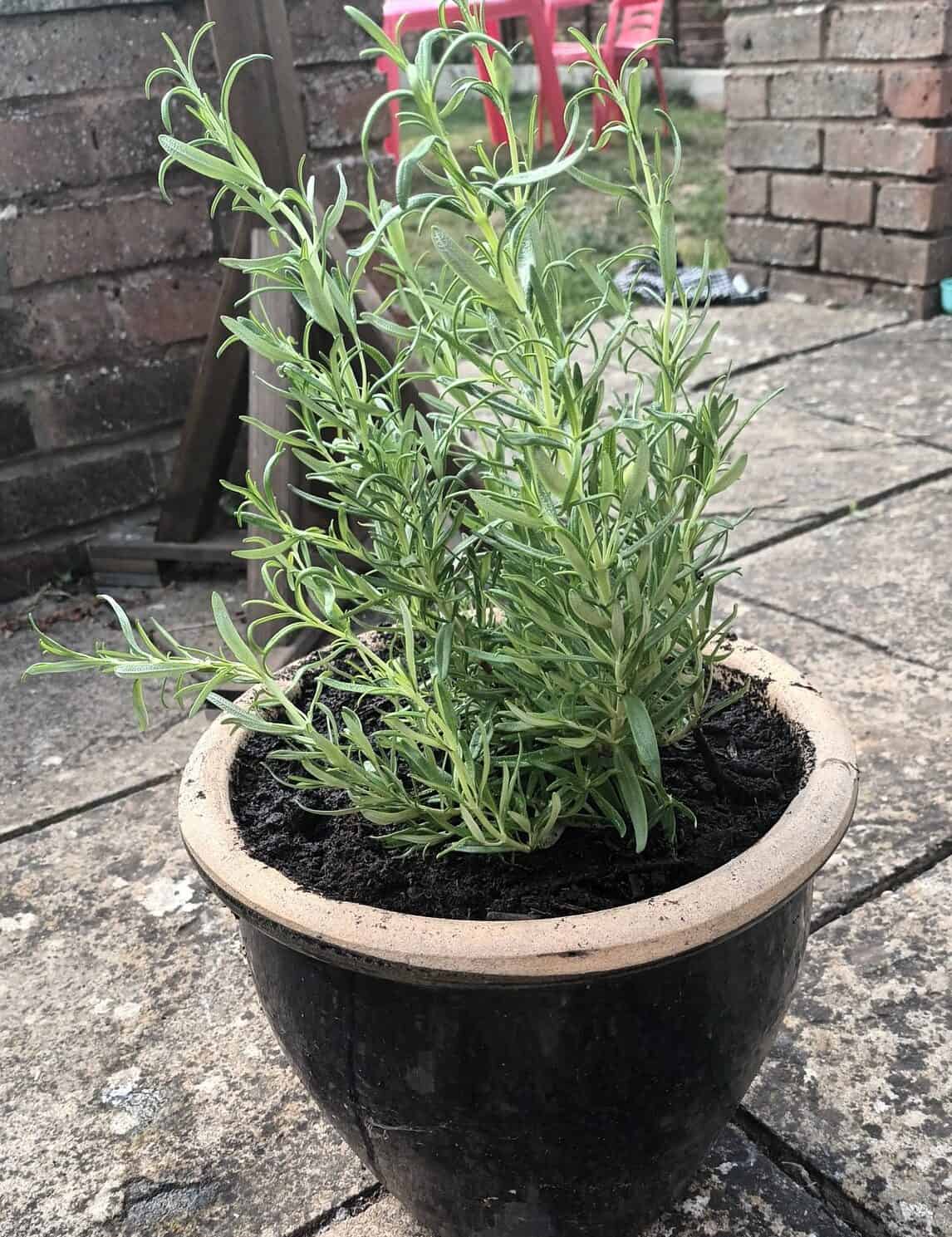
That said, you can propagate Rosemary any time of the year, but the growth may not be ideal and fast as in recommended time.
But you must avoid winter as Rosemary undergoes dormancy, and they prefer to stay unbothered.
How to Propagate Rosemary? [Complete Guide]
Before hopping on the propagation train, ensure you have Rosemary seeds, rooting hormone, potting mix, and pruning shears.
Remember, Rosemary propagation is easy, even if you are a novice, and there are three different methods to propagate Rosemary.
1. How Do You Propagate Rosemary From Cuttings?
Rosemary can easily take up the original pace of growth when propagated by cuttings.
Moreover, you have 2 different mediums to root Rosemary stem cuttings; water and soil.
How to root Rosemary cuttings in water?
- To grow Rosemary from a stem cutting in water, take 6 inches long softwood sprigs from a healthy Rosemary plant.
- Cut below the branching point where the new leaf or stem sprouts emerge.
- Remove the leaves up to 2 inches from the base of the cut stems to allow space for the new roots.
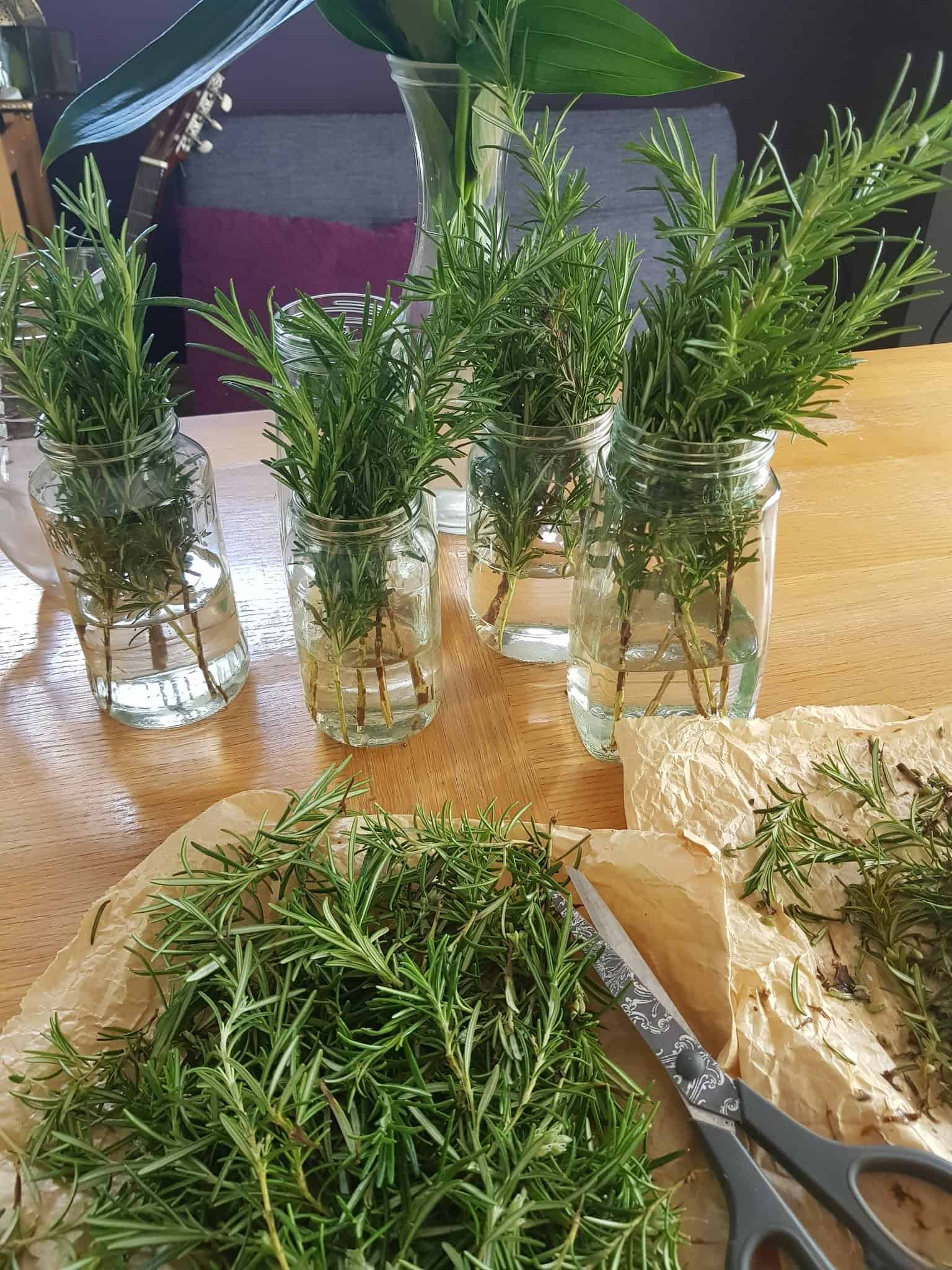
- Fill a glass jar about 2 inches with rooting hormone solution.
- Then, dip the bare stems into the water, ensuring the leaves do not touch the water level.
- Change the water daily to prevent bacterial growth and stem rots.
Rosemary cuttings take about 2-3 weeks to root in water.
At last, transplant the rooted cuttings into the soil mix enriched with organic perlite and peat moss.
And keep them in a shaded place to allow the cuts to establish the roots in the ground.
You can also grow Rosemary from cuttings without rooting hormone.
The hormone aids in faster root growth, which the plant, either way, can pick up quickly in water.
How to root Rosemary cuttings in soil?
Rooting directly in the soil does not require the transplanting step as in a water medium.
- Make a diagonal cut below the petiole or branching leaf stem, leaving a 6-inch long stem cutting.
- Then, fill a 6-inch wide and deep terracotta pot with a suitable potting mix.
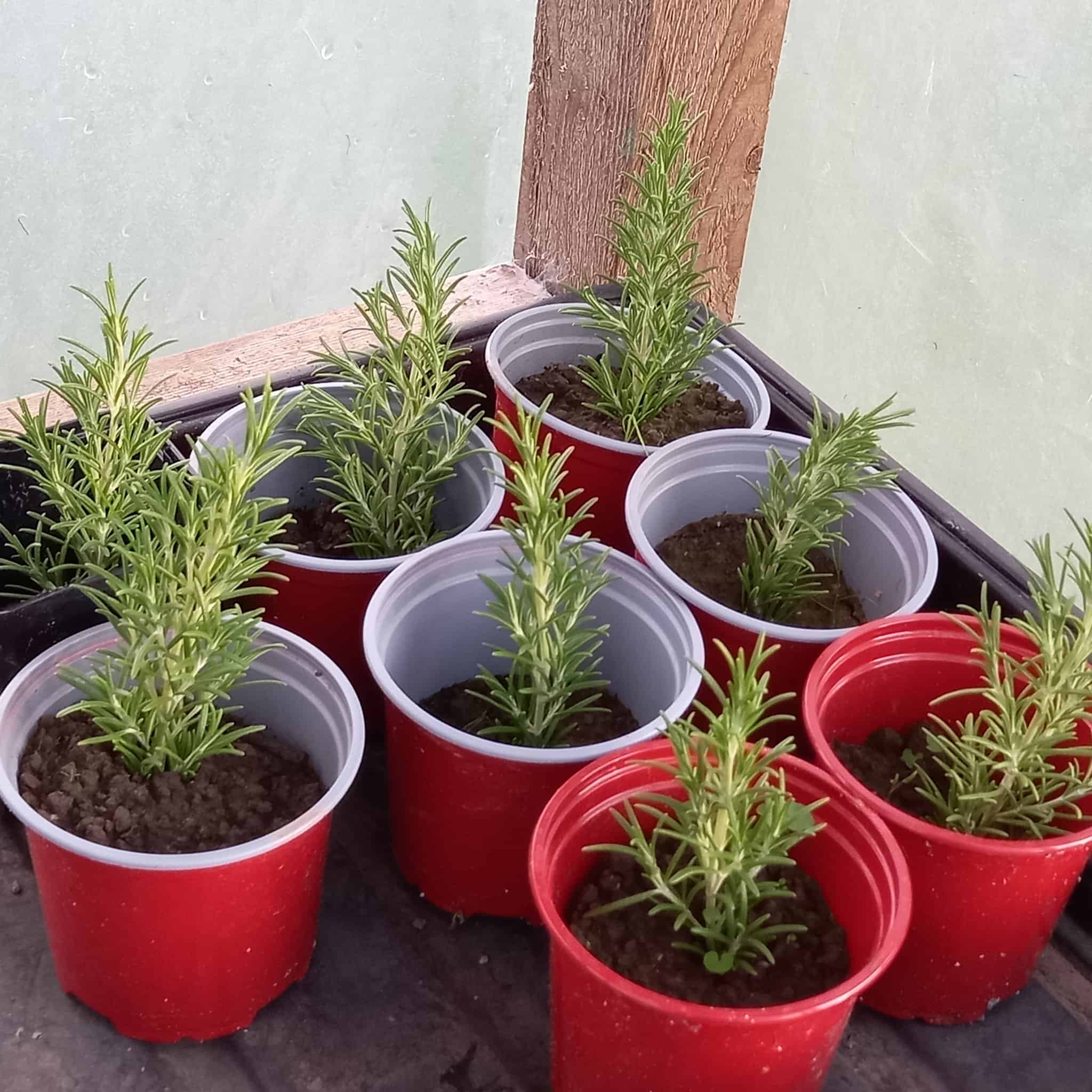
- Dip the cut stem into the water and then dip it into the rooting hormone.
Honey is also a striking alternative for growth hormones because of its anti-bacterial and anti-fungal properties.
- Dig a 2-inch deep hole in the potting mix and put the bare stem through the cut end.
- Cover the pot with a perforated plastic bag to secure moisture and humidity.
- Mist the plant every 1-2 days if it seems too dry.
- Then, water the cuttings an inch every 1-2 times a week before the development of roots.
It takes 4-8 weeks to root Rosemary cuttings in soil.
Transplanting is only necessary if you grow more than one stem per pot.
2. How Do You Propagate Rosemary Using Layering?
Although a bit complex compared to stem cutting, the layering method is another way to propagate Rosemary.
- Take a long, healthy, soft branch from a well-established parent plant.
- Bend the branch towards the soil to stimulate new growth attached to the stem.
- Remove the leaves from the bent part to make space for the emerging roots.
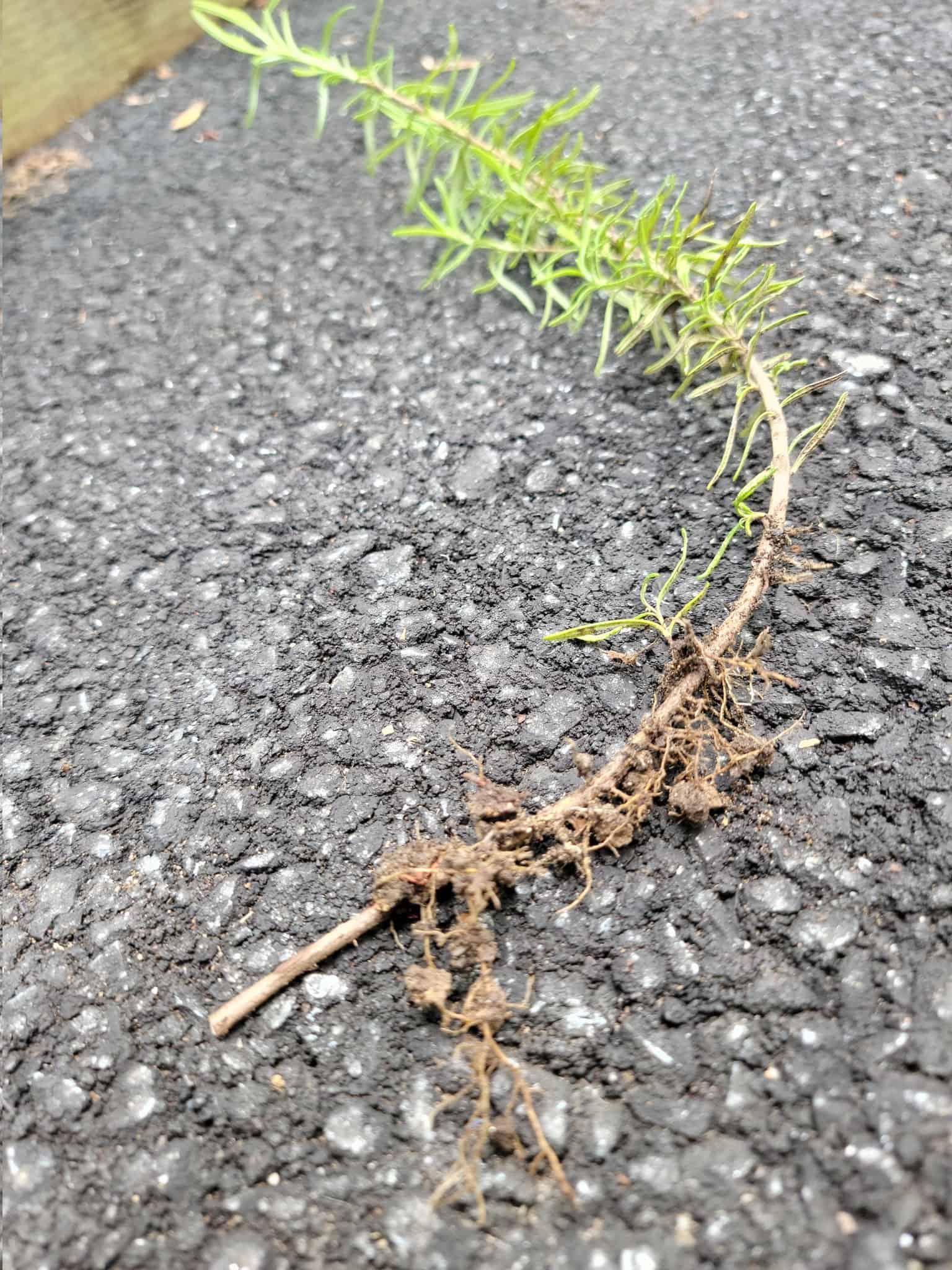
- Only scrape the outer layer of the bent stem, making the tissue open to the soil.
- Dig a hole in the soil so the wounded stem is inside, and the leaves are above the ground.
- Lastly, use a stone or heavy object to keep the plant bent down in place till new roots emerge.
Depending on the climate and surroundings, new roots are visible only after 4-12 weeks.
After root emergence, cut off the new plant from the Rosemary with the help of shears and transplant it either in a potting mix or directly into the garden soil.
3. How Do You Propagate Rosemary Using Seeds?
You can grow Rosemary from seeds in the following way.
- Choose a seed-starting tray with a humidity dome.
- Prepare a potting mix with a 50-50 perlite and peat moss ratio.
- Before filling the pot, lightly moisten the mix with chemical-free water.
- Rosemary seeds are tiny, so sprinkle 4-5 seeds in the potting mix.
- Cover seeds lightly with the soil to allow them to get sunlight.

- Water the soil to keep it damp and moist.
- Cover the pot with a humidity dome for warmth.
- Finally, place the pot within reach of direct sunlight.
- Use a heating mat to keep the soil temperature around 30-86ºF.
Rosemary seedlings germinate within 2-4 weeks.
However, you can transplant them when the seedlings after they reach 4-6 inches tall.
Tips to Care for Rosemary After Propagation
Here are some of the tips to care for your newly propagated Rosemary.
- Ensure young Rosemary receives at least 6-8 hours of direct sunlight.
- Keep the humidity level at 45-55% and temperatures between 65-85°F.
- Water Rosemary weekly in summer and every 2 weeks in spring and fall.
- Use light, porous, well-draining soil with a pH of 6.5-7.
- Add pebbles or gravel limestone to increase the soil drainage.
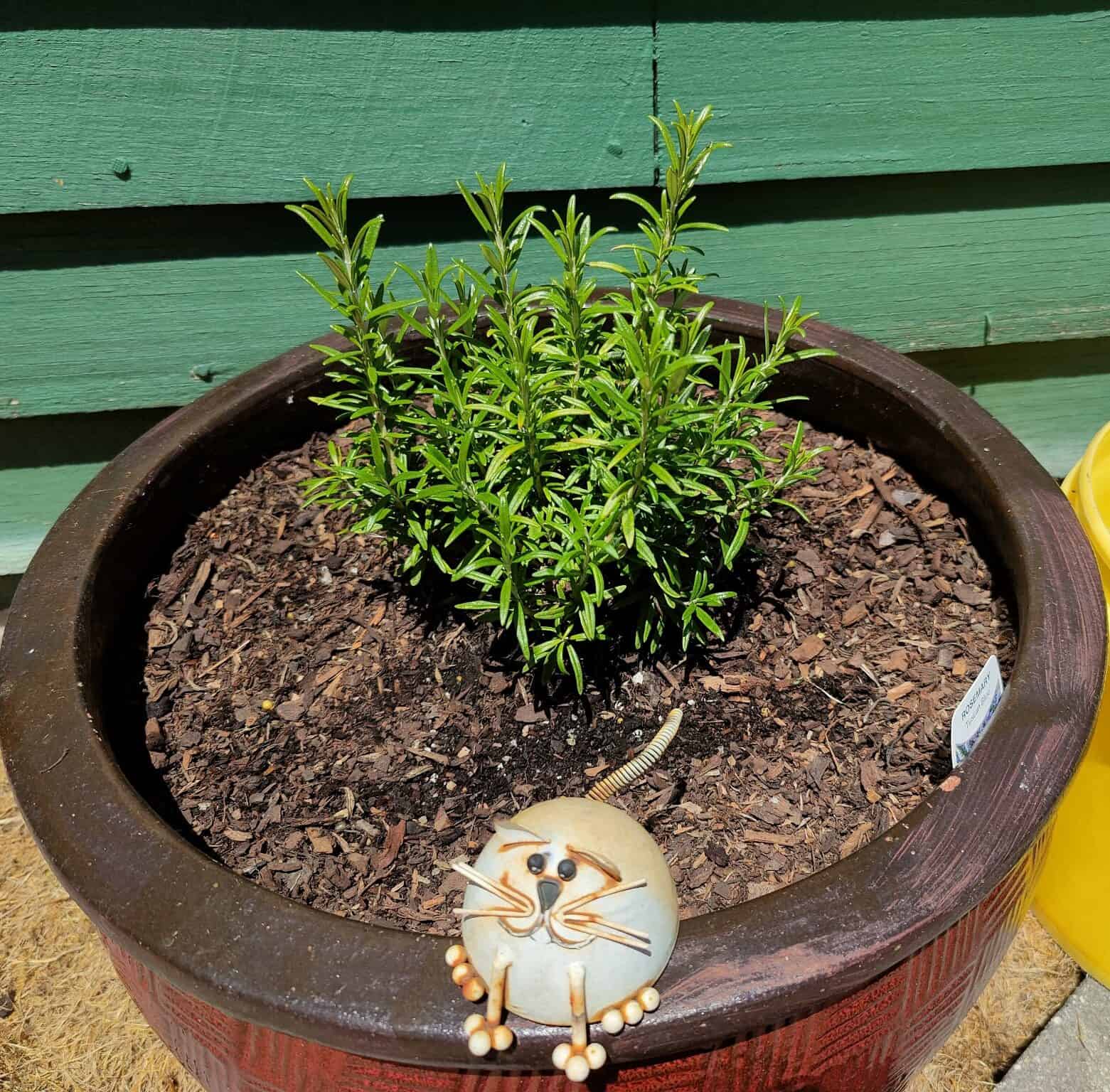
- Employ 20-20-20 NPK fertilizers every 2 weeks in spring and summer and monthly during fall and winter.
- Spray neem oil or copper-rich fungicides on the plant to keep pests and diseases.
- When the plants get bushier, you can trim them once in the growing season.
From Editorial Team
Conclusion!
Propagating from cutting and layering tends to be more cost and time efficient than seed for Rosemary.
But seeds may not stay true to their parent while cutting shares identical genetics with its mother plant.


